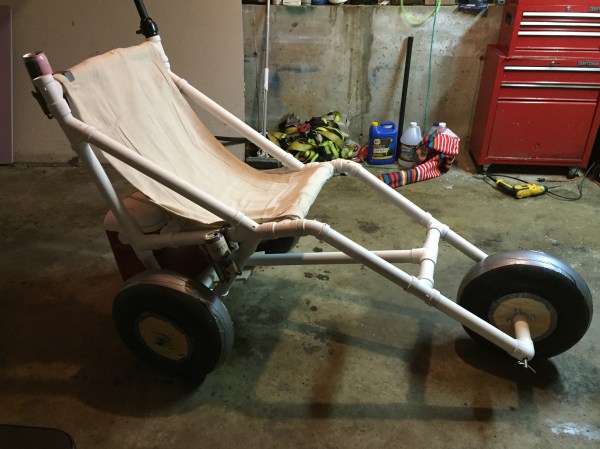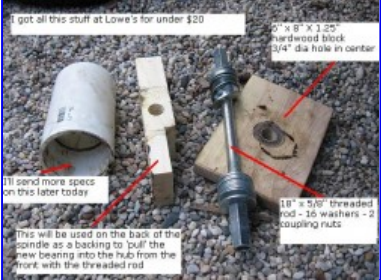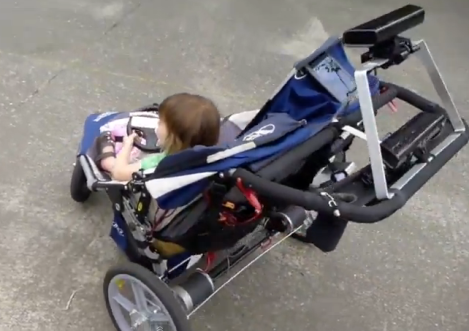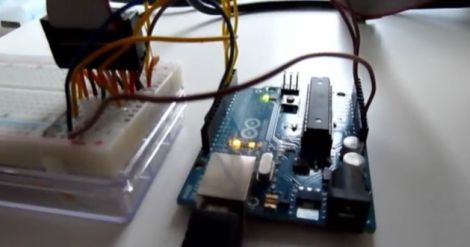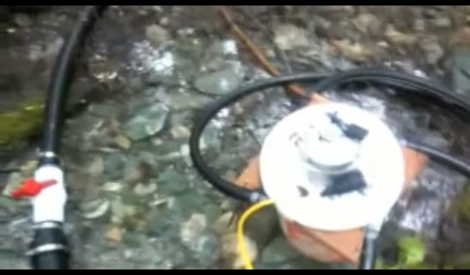[masterfoo]’s mother-in-law suffers from a bad hip which would have sidelined her participation in the Fourth of July festivities. As a testament to the power of family and ingenuity, [masterfoo] built her a beach-capable wheel chair to give her some off-roading capability.
The frame is built out of 1.5″ PVC piping and the tires are 20×8-8″ inner tubes for ride-on lawnmowers. The lawnmower wheel inner tubes were cost-effective and fit the purpose, saving the need for the more expensive purpose-built-for-the-beach Wheeleez tires. They also have a fluid inside that plugs small punctures which will come in handy against he beach’s small cacti and other flora. This video was their guide for the foam insulation and plywood wheel assembly, also employing the handy man’s secret weapon to protect the tube from the rim’s plywood edge. Check it out in action!
Continue reading “Cheap And Effective Dune Buggy Wheel Chair”

